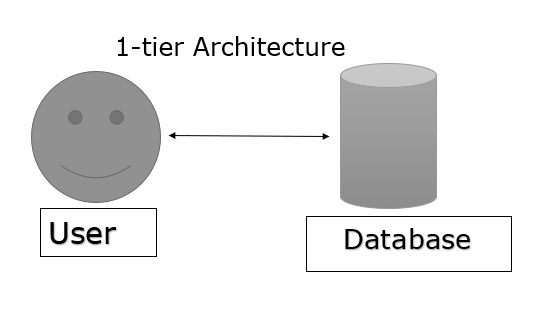
 Data Structure
Data Structure Networking
Networking RDBMS
RDBMS Operating System
Operating System Java
Java MS Excel
MS Excel iOS
iOS HTML
HTML CSS
CSS Android
Android Python
Python C Programming
C Programming C++
C++ C#
C# MongoDB
MongoDB MySQL
MySQL Javascript
Javascript PHP
PHP
- Selected Reading
- UPSC IAS Exams Notes
- Developer's Best Practices
- Questions and Answers
- Effective Resume Writing
- HR Interview Questions
- Computer Glossary
- Who is Who
What is tier-1 architecture in DBMS?
The overall design of the Database Management System (DBMS) depends on its architecture. A large amount of data on web servers, Personal Computers (PC) and other elements are linked with networks with the help of basic client or server architecture.
PCs and workstations are part of Client architecture that are connected over the network. The architecture of DBMS depends on how the users are linked to the database.
There are three kinds of DBMS Architecture, which are as follows −
Tier-1 Architecture.
Tier-2 Architecture.
Tier-3 Architecture.
Tier is a physical unit where the program code or a process is run.
For example − data base server, application server, client machine, etc.
Layer is a logical unit, which deals with, how data has to be organized or code to be organized.
For example − data access, controller, etc.
Now let us discuss about Tier-1 or 1-Tier architecture:
Tier-1 Architecture
In 1-tier architecture, the data is directly provided to the user and that user can directly use the database through the computer.
Any changes or updates that are done will reflect directly to the database.
The 1-tier architecture is used for the development of applications where a programmer directly communicates with the database for very fast response.
It is used for enhancement of the local application.
The Tier-1 Architecture is diagrammatically represented below:

Consider an example −
The three-layer solution is deployed on single tier like personal workstations.

In the above diagram all three layers like presentation, business and data access logic are on same machine.
They are all tightly connected, and have scalability, portability and maintenance.

